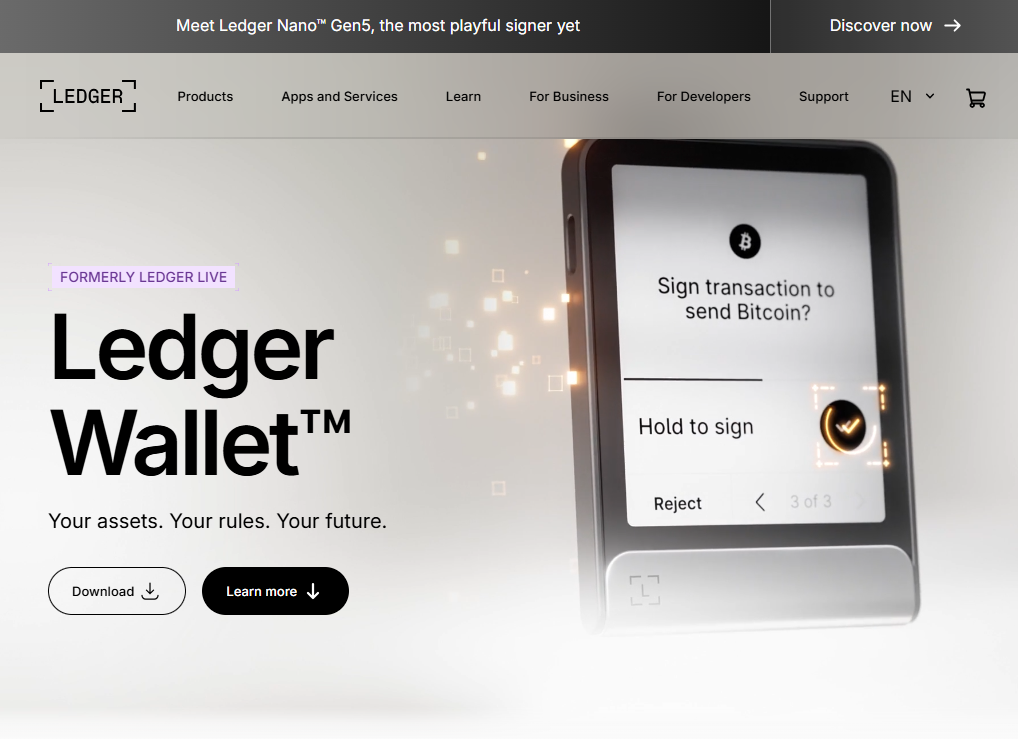Ledger Live Desktop is built around a simple premise: your private keys should never leave a secure device, but your experience managing assets should still be smooth, modern, and powerful. The desktop app connects to Ledger hardware wallets, presents a consolidated view of accounts across many blockchains, and offers integrated flows for sending, receiving, staking, swapping, and installing firmware or apps on your device. Because the user interface is decoupled from key storage, you get the best of both worlds — a responsive visual experience plus hardware-level protection.
Getting started: setup and first steps
Starting with Ledger Live Desktop typically involves installing the app, connecting your Ledger device, and following the guided setup on-screen. The app helps you create or restore an account by verifying a mnemonic on the device itself; the seed words are never typed or sent to the computer. Once the device signs a verification request, the desktop app imports public addresses so you can start receiving assets. Accounts are labeled and grouped so you can manage several blockchains, tokens, and subaccounts within one workspace.
Security model and why it matters
At the heart of Ledger Live Desktop is a clear separation between the user interface and the secure element inside the hardware wallet. Signing operations (the cryptographic approvals needed to send or move funds) occur on the device and require explicit physical confirmation. That prevents malware on a desktop from silently extracting or using private keys. Ledger Live also provides features like firmware update flows, secure device attestation, and transaction previewing to reduce user error and phishing risk.
Best security practices
Core features: portfolio, accounts, and transfers
Ledger Live Desktop gives you a consolidated portfolio view so you can see a snapshot of your holdings and how they develop over time. Each account shows transaction history, token composition, and a contextual balance. Sending and receiving flows walk you through address selection and verification. Because the desktop app supports many chains, it is practical for diversifying portfolios or managing tokenized assets across ecosystems.
Staking, earning, and managing yield
Several protocols allow you to stake or delegate assets directly from Ledger Live Desktop. The app guides you through selecting a validator, choosing staking amounts, and understanding lock-up or unbonding periods. Earnings and rewards are shown in the account details so you can track yield over time. The staking experience is designed so the private key never leaves the device — only the necessary signature is performed after you confirm it on the hardware wallet.
Built-in swaps and third-party integrations
Ledger Live Desktop includes swap or exchange integrations that let you trade assets without exporting keys. These services are provided via trusted third-party partners — Ledger acts as a secure interface that ensures you sign the correct transaction on-device. The app also supports a selection of decentralized finance utilities through partner connections; where integrations exist, they’re shown with clear descriptions and risk notifications.
Maintenance: firmware, backups, and updates
Maintaining a Ledger device is a straightforward process inside the desktop app. Ledger Live will notify you when a firmware update is available and walk you through a signed update that you confirm on-device. Backups rely on your recovery phrase, and the app emphasizes storing that phrase offline in multiple secure locations. Regularly updating both the desktop app and device firmware reduces exposure to software vulnerabilities.
Practical tips for everyday use
If you use Ledger Live Desktop daily, build workflows that reduce friction: create clear account labels, use receive templates for recurring deposits, and check the transaction preview every time. For larger transfers, consider sending a small test amount first to confirm network fees and expected timing. Use the portfolio export tools for bookkeeping or tax reporting. And if you experiment with new tokens or DApps, start with low-value transactions until you understand the flow.
Troubleshooting common situations
Connection or detection problems usually come down to cable or USB permissions. Try a different USB port or cable, ensure the device is unlocked, and confirm the Ledger Live desktop app is allowed through OS security settings. If an account’s balance looks out of sync, refreshing the account or re-synchronizing can help; the app reads public chain data and may need to re-fetch indexed transactions. For firmware or app install issues, follow the on-screen diagnostics which typically identify the exact step that needs attention.
Who benefits most from Ledger Live Desktop?
Ledger Live Desktop fits a broad audience: long-term holders who prioritize security, active traders who want a single place to monitor diverse assets, and developers or power users who need to manage multiple accounts across testnets and mainnets. It’s also a good fit for people who want transparency — transaction history and device confirmations provide clear audit trails.
Final thoughts
Ledger Live Desktop is designed to bridge a careful security posture with modern usability. By keeping private keys on a dedicated device while offering a feature-rich desktop interface, it reduces many of the risks that come with managing cryptocurrencies. Whether you’re securing a long-term position or interacting with decentralized services, the combination of on-device approvals, clear transaction previews, and integrated account views helps you act confidently and deliberately.
